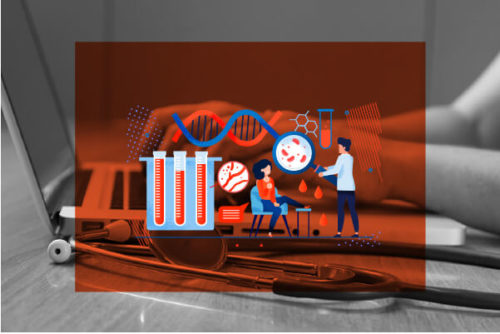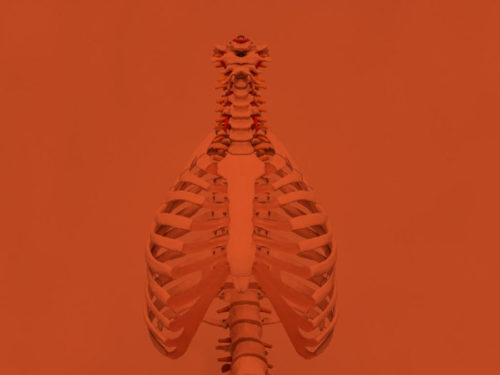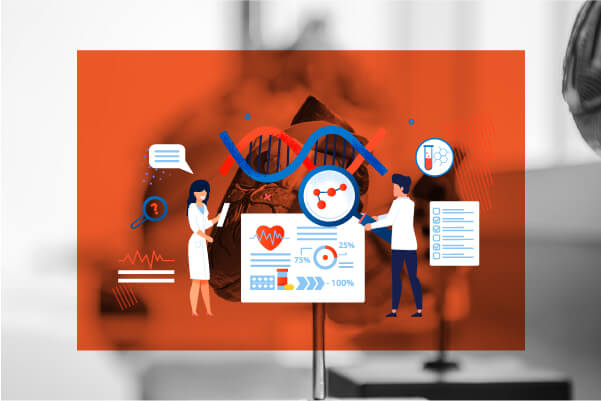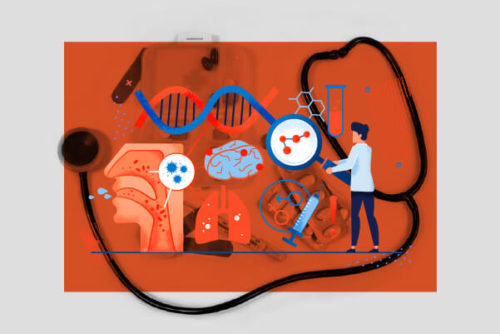Financial Assistance Resources for Individuals With HIV/AIDS
The medical treatments of HIV and AIDS have made many breakthroughs. The results of these treatments may include undetectable and untransmittable viral loads that make HIV unlikely to transmit sexually. Due to therapeutic and prophylactic advancements, the quality and longevity of life are improving for individuals with HIV/AIDS.
Quality of life for individuals with HIV/AIDS may hinge on access to the medication and healthcare needed to curb infection and maintain health. There are resources available to financially assist or create access for individuals with HIV/AIDS to receive the treatment they require to live their life to the greatest potential.
Health Care Needs of HIV/AIDS Patients
Healthcare needs for people living with HIV/AIDS can be categorized into prevention services, diagnostic and treatment services, and rehabilitation services. For patients, a critical aspect of healthcare needs and services includes barriers to access, such as travel and financial accessibility as well as resource availability.
Prevention and counseling services include access to public training and training packages that provide accurate information, including prevention and training services built specifically for vulnerable groups. Prevention services should include information and consultation on family planning, reproductive health, and sexual education. These services must provide viable options, information, and tools such as informational packages or contraceptives.
Diagnostic and treatment services may include widespread use of rapid diagnostic tests, availability of medications, and full treatment for HIV/AIDS and associated illnesses or additional conditions.
Rehabilitation services include special supportive psychological counseling, personal counseling, group therapy, and family therapy. Rehabilitation services may also include access to home care and treatment, as well as peer support, focused support groups, and nutritional guidance and support. A critical aspect of rehabilitation may also include access to recreational activities with peer groups and positive clubs, access to insurance, and support through employment issues.
HIV/AIDS Treatment Cost
The cost of HIV treatment is rising. The annual cost of antiretroviral therapy (ART) including new generic options for medication ranged between $36,000 and $48,000 in 2018. The cost of treatment in 2018 had risen by 34% since 2012, outpacing the rate of inflation.
These costs reflect the total cost of treatment rather than out-of-pocket expenses, but the rising cost of insurance and healthcare may affect the ability of patients to engage in or sustain critical care without going into medical bankruptcy.
Expenses in HIV treatment and care may include:
- Outpatient care;
- Emergency services;
- Overnight stays at the hospital;
- Mental health services;
- Prescriptions and medications;
- Preventative care;
- Lab tests;
- Rehabilitation.
The cost of HIV/AIDS treatment depends on a few critical factors. These may include:
- The types of insurance that are available to the individual, including prescription drug insurance.
- The types of antiretroviral therapy medications — brand name or generic — that work for each individual case.
- What types of pharmacy discounts or prescription assistance programs are available.
- Where the individual lives and what the medication and treatment costs are in their area.
- If the patient requires care for multiple conditions.
- HIV drug resistance may compromise the effectiveness of some antiretroviral therapy medications and limit therapeutic options for treating HIV/AIDS.
Federal HIV/AIDS Medication and Treatment Resources
HIV and AIDS treatment and care is essential to reducing viral load, protecting health and longevity, and reducing the risk of transmission through preventative measures. If you do not have access to private health insurance through an employer, or your health insurance through the Health Insurance Marketplace does not adequately cover or provide access to HIV/AIDS treatment, you may qualify for federal assistance to pay for medication and treatments through the following resources.
Medicare
Medicare is a federal health insurance program offered at a national level and regulated by the federal government of the U.S. To qualify and apply for Medicare, you must be aged 65 or older or may be included if you’re a younger person with qualifying conditions such as a permanent disability. You must also apply during special enrollment periods. The majority of people who rely on Medicare for HIV medical treatment are under the age of 65 and have a qualifying disability, or they qualify for Social Security Disability Insurance.
There are different parts of Medicare coverage for specific services:
- Medicare Part A covers hospital insurance, inpatient hospital stays, care in skilled nursing facilities, hospice care, and some home health care.
- Medicare Part B covers medical insurance such as certain doctor visits, outpatient care, medical supplies, HIV screenings, and preventative services.
- Medicare Part D helps to cover the cost of prescription drug coverage.
Medicaid
Medicaid is a jointly funded federal and state program
that offers free or low-cost health care to those who are qualified for the program. Those eligible for Medicaid include low-income families, qualified pregnant women, and individuals receiving Supplemental Security Income.
There may also be additional state-specific options for coverage for those who would otherwise not be eligible. The Affordable Care Act allows states to receive federal Medicaid payments for Medicaid expansion. This has allowed for some low-income individuals with HIV to receive help through Medicaid when they otherwise would not have qualified.
Mandatory Medicaid benefits that are federally required include:
- Inpatient hospital services;
- Outpatient hospital services;
- Periodic screening, diagnostic, and treatment services;
- Nursing facility services;
- Home health services;
- Physician services;
- Rural health clinic services;
- Federally qualified health center services;
- Laboratory and X-ray services;
- Family planning services;
- Nurse Midwife services;
- Certified pediatric and family nurse practitioner services;
- Transportation to medical care.
Other services that are not federally required but may be offered at the state level include:
- Prescriptions;
- Clinic services;
- Physical or occupational therapy;
- Dental services;
- Personal care;
- Case management.
To apply for Medicaid you must create an account and contact your state program.
Children’s Health Insurance Program (CHIP)
The Children’s Health Insurance Program (CHIP) provides low-cost health coverage for children in families that may not qualify for Medicaid. The eligibility requirements of CHIP vary by state, though you can apply at any time of the year by calling 1(800) 318-2596, or by filling out an application through the Health Insurance Marketplace. CHIP benefits will differ by state, but each program should provide comprehensive coverage in regards to:
- Routine check-ups;
- Immunizations;
- Doctor visits;
- Prescriptions;
- Dental and vision care;
- Inpatient and outpatient hospital care;
- Laboratory and X-ray services;
- Emergency services.
AIDS Drug Assistance Programs (ADAP)
The Directory of AIDS Drug Assistance Programs (ADAP Directory) is a project run by the ADAP Advocacy Association and supported by grants. The program provides HIV-related services, medications, healthcare coverage, and financial resources to people in need by working cooperatively with state, city, and local organizations.
The ADAP directory offers program assistance by state, as well as listings of resources such as organizations, patient medication assistance, and pharmaceutical patient assistance programs.
Ryan White HIV/AIDS Program
The Ryan White HIV/AIDS Program is offered through the Health Resources and Services Administration. The program is divided into five parts:
- Part A provides funding for medical and support services to eligible metropolitan areas and transitional grant areas that are the most severely affected by the HIV/AIDS epidemic.
- Part B provides funding for states and territories to improve the quality, availability, and organization of HIV/AIDS support services and health care.
- Part C provides funding for local community-based organizations to facilitate comprehensive primary healthcare and support services in outpatient settings. The funding and program support is intended for people living with HIV through Early Intervention Services program grants.
- Part D provides funding for local, community-based organizations to facilitate outpatient, ambulatory, family-centered primary and specialty care for women, infants, children, and youth living with HIV. Part D funding also provides support services to people living with HIV and their family members.
- Part F provides funding and support for clinician training, technical assistance, and the development of innovative models of care to improve health outcomes and reduce transmission. Programs this funding supports include:
To qualify for HIV care and treatment assistance through the Ryan White HIV/AIDS program, you must be diagnosed with HIV or AIDS, be considered low income as determined by your state, and have no health insurance or have health insurance that does not pay for the care you need. Assistance through the program will include being assigned a case manager to help you understand the services you need. Core medical services include:
- AIDS drug assistance program treatments;
- AIDS pharmaceutical assistance;
- Early intervention services;
- Health insurance premium and cost-sharing assistance;
- Home and community-based health services;
- Home health care;
- Hospice services;
- Medical nutrition therapy;
- Oral health care;
- Outpatient ambulatory health services;
- Substance abuse outpatient care.
Additional support services may be offered outside of core services as directed by case managers.
Health Center Program
Health centers provide high-quality preventive and primary care services that include HIV testing, medical care, substance abuse care, family planning, as well as mental health and housing support. The HIV Testing Sites & Care Services Locator is easy to use by entering your city, state, or zip code to see what services are available in your location.
American Indian and Alaska Native Programs
The Indian Health Service is a federal health program for American Indians and Alaskan Natives. Programs provided by the IHS include HIV/AIDS programs for prevention and treatment. These programs are specifically for American Indians and they focus on:
- Implementing effective prevention interventions;
- Treatment as prevention;
- Developing HIV care standards and performance measures;
- Reducing new infections and offering HIV/AIDS training kits and guides;
- Increasing routine HIV screening;
- Access to care and improving health outcomes for people living with HIV and AIDS.
Veterans Programs
The U.S. Department of Veterans Affairs offers HIV support specific to veterans, leading the country in HIV screening, treatment, research and prevention. Support, information, and services offered to veterans include:
- Testing support;
- Diagnosis support and information;
- Treatment support;
- Information on tips and tools for getting checked, questions to ask your doctor, and tips for safe sex.
- Information and support for living with HIV such as alternative therapies, diet and nutrition, exercise, mental health, sex and sexuality, as well as information and support for smoking, drugs, and alcohol use.
Non-Federal HIV/AIDS Medication and Treatment Resources
There are a variety of non-federal programs and resources available to those living with HIV/AIDS. These programs vary from private health insurance to Patient Assistance Programs and nonprofits that offer financial or medical assistance, support, and treatment.
Private Health Insurance
Private health insurance is typically obtained through an employer or purchased as individual health insurance. The Affordable Care Act improves access to coverage for HIV and AIDS by ensuring coverage to people with pre-existing conditions and more affordable coverage in the Health Insurance Marketplace.
Each healthcare plan will offer different premiums, deductibles, copayments, and coinsurance, making it vitally important that you choose the best health insurance to meet your financial needs.
Patient Assistance Programs
Patient assistance programs (PAPs) are organizations and programs that are typically sponsored by pharmaceutical companies, but may also include state programs or nonprofit-sponsored programs. PAPs offer free or low-cost medication and treatments for low-income individuals, or to bridge coverage gaps of those who are insured or do not have adequate prescription drug coverages.

- Be a permanent and legal resident of the United States or Puerto Rico.
- Have proof that you are uninsured or that your insurance doesn’t cover the cost of your medication requirements.
- You may need to provide proof that you meet certain income eligibility requirements.
To sign up for PAPs, and learn more about their offerings, you may need to contact the program directly by calling or emailing, or sign up online. You could also utilize the Common Patient Assistance Program Application (HIV) as an enrollment tool that allows you to compile all of your information to send to various PAPs programs to apply for support.
The Medicine Assistance Tool (MAT) is not a patient assistance program, it’s a search engine that helps to match patients’ PAPs, resources, and cost-sharing programs to help with out-of-pocket expenses.
PAPs programs include:
Nonprofits
There are many nonprofit programs that work in collaboration with donor organizations and international organizations to offer education, prevention, support, treatment, medication, and services for people living with HIV and AIDS. A few notable HIV/AIDS nonprofits include:
- AVAC focuses on education, policy analysis, advocacy, and community mobilization to promote ethical development and global delivery of biomedical HIV prevention options.
- The International AIDS Society is a member-based organization that works to provide access to information and education regarding HIV and AIDS treatments and policies. They offer a variety of HIV programs for policy, research, challenging structural barriers, and engaging with relevant communities and issues.
- The AIDS Healthcare Foundation provides medical care and advocacy for those living with HIV and AIDS.
- The AIDS United Transgender Leadership Initiative builds grassroots leadership in transgender communities to improve transgender health outcomes, improve HIV service delivery, increase transgender leadership in HIV policy arenas, and to create a supportive network and leadership in the transgender community.
- The San Francisco AIDS Foundation is committed to promoting health, wellness, and social justice for communities most impacted by HIV by offering sexual health and substance use services, as well as advocacy, and community partnerships and programs.
- The Elizabeth Glaser Pediatric AIDS Foundation offers global comprehensive HIV and AIDS prevention, as well as care and treatment services that are typically focused on women, mothers, infants, children, and adolescents.
- Greater Than AIDS offers free confidential HIV testing and access to free or low-cost PrEP medication that is effective in preventing HIV transmission. The organization also offers assistance in finding care facilities and treatment, as well as connecting individuals with financial assistance programs.
Additional Methods to Cover Costs
There may be times that you need further financial assistance to help cover the cost of gaps in access to important medical care, especially if you don’t have insurance. If you have exhausted your resources between insurance, federal programs, and non-federal assistance, you may consider fundraising or medical crowdfunding, or using a line of credit to meet your financial needs.
Crowdfunding and Fundraising
Medical crowdfunding and fundraising are ways to gather small donations from a large number of individuals. Crowdfunding on online platforms for HIV and AIDS can be a great opportunity to share your story and bring awareness of the health and financial impacts of living with HIV and AIDS.
To start a crowdfunding campaign you will need to select a platform to host your fundraiser. You may need to closely examine the ease of set up and use, fees, and how you intend to share your story. A few options for medical-specific fundraising may include:
- GoFundMe medical fundraising.
- Transparent Hands.
- Fundly fundraisers for medical and health expenses.
Once you have selected your fundraising platform, you will need to design a strategy of how you will get your story in front of as many people as possible to help it be successful. Tips to create a successful campaign include:
- Calculate the cost of your medical bills and related expenses. This may include the cost of travel, treatment, medicine, follow-up care, and other related expenses. Providing this information as part of your story in your crowdfunding campaign helps potential donors see exactly where and how their donations will be spent, putting them at ease that you are in fact a real person in need and not a crowdfunding scam.
- Tell your story and use pictures if possible. Sharing your personal story in a heartfelt, genuine, and compelling way allows your potential contributors to connect and engage with you. Contributors may be more likely to donate and share your story if they feel a personal connection.
- Network and use your online presence to share your story and raise money for treatments and expenses. Connect with local news and media sources, contact local community organizations that would be sympathetic to your situation. Ask your friends, family, and others in your network to help you share your campaign.
- Provide regular updates to your contributors about how your campaign is going and your current situation. Those that follow your story and make contributions will appreciate updates and news on your status, and how their contributions have made a positive impact on you and your campaign.
- Utilize any services or help offered by your fundraising platform. Many platforms offer services to help get you started or maintain your fundraising campaign.
Credit Cards and Loans
If you have exhausted all other opportunities to help pay for your medical expenses, you may consider paying your bills with credit cards if you are still short on cash. Using a credit card to pay for your medical bills can provide you with time to pay back the debt. You will need to consider the type of credit card that will work best for your situation and finances by looking into the credit card interest, fees, and rewards.
Applying for a credit card will require your name, date of birth, billing address, and Social Security number. You will also need to consider your current financial health and credit score to see if you can increase your credit limit to ensure that you can cover your expenses. Most importantly, you will need to create a financial plan to pay off your credit card debt and avoid any extra spending that can put you further into debt.
You may also consider applying for a loan from the bank. There are different types of loans that you can apply for, including a personal loan. While applying for a credit card allows you a monthly credit limit, a personal loan provides you with your borrowed money in one lump sum. To use a personal loan, you will need to understand the components of the loan such as:
- Interest and interest rate;
- The loan principal;
- Any collateral used to secure the loan;
- The cost of monthly payments;
- Your credit score;
- The loan term.
If your medical debt and expenses become insurmountable, you may consider medical debt forgiveness. This includes negotiating a payment plan with your healthcare provider’s billing department, double-checking your insurance coverage and potentially disputing your hospital bill, settling your medical debt, or applying to charities to help pay your debt expenses.
Helping College Students With HIV/AIDS
Students living with HIV/AIDS may encounter unique challenges while attending college. These could include fear of discrimination, difficulty finding access to proper healthcare and treatments, as well as the challenge of balancing finances to pay for medical expenses.
Consider searching for mental health and coping resources specifically catered to those living with HIV and AIDS to help improve your quality of life, such as:
- How, when, and why to tell others of your positive status.
- Sources of nutrition and exercise when you have HIV.
- Using an HIV/AIDS hotline for emotional support or to find treatment in your area.
- Using a support animal and PAWS support services.
Students might also consider applying for scholarships that are specifically built to support students with a positive HIV/AIDS status. Scholarships include:
- The James & Colin Lee Wozumi Family Scholarship is offered on an annual basis by the Pride Foundation. The amounts awarded range from $500 to $12,000.
- The Helen Veress-Mitchell Scholarship Fund, hosted by Capital City Aids Fund, provides scholarships for people living with HIV/AIDS to attend college or a technical school. To apply for the scholarship you will need to have ties with Northern California and fill out an application.
- The Janis Morrow Scholarship hosted by PKIDs Online helps to support children with parents who have a positive status, regardless of the child’s status.
You may also choose to seek out if your school or university offers its own scholarships rather than scholarships from nonprofits or other organizations. Examples of school-specific scholarships include:
- The Positive Futures Scholarship from the University of Boulder.
- The Robert Westwood Scholarship from San Francisco State University.
- The Harold A. McIntosh Scholarship for Students Living with HIV/AIDS from the LGBTQ Alumni Society at Ohio State University.
Additional Resources and Information
There are additional resources for people living with HIV/AIDS that provide additional support. These may include:
- Services to find care and treatment:
- Finding HIV services near you.
- Finding a healthcare provider.
- Finding an HIV care specialist.
- Using your state HIV/AIDS toll-free hotline.
- Housing and job resources:
- Housing Opportunities for Persons With AIDS Program (HOPWA).
- Using a resource locator to find affordable housing, homeless resources or special housing needs.
- Resources for working with HIV as well as information on employment and discrimination.
- Resources for mental health:
- Finding mental health treatment near you.
- Understanding depression and mental health.
- Resources for legal issues and HIV/AIDS stigma and discrimination:
- Finding HIV-specific state laws.
- Learning more about HIV/AIDS discrimination.
- Filing an HIV/AIDS discrimination complaint.
- Share and hear stories about HIV stigma.
- Travel information and resources:
- Learn about health guidelines for immunocompromised travelers.
- Look up travel health notices for travel advice and resources.



